In the studio with Liam Fleming
A quiet cul de sac in Adelaide’s West End has become a haven for local glassmakers like Liam Fleming, whose more recent work was born from playful experimentation.

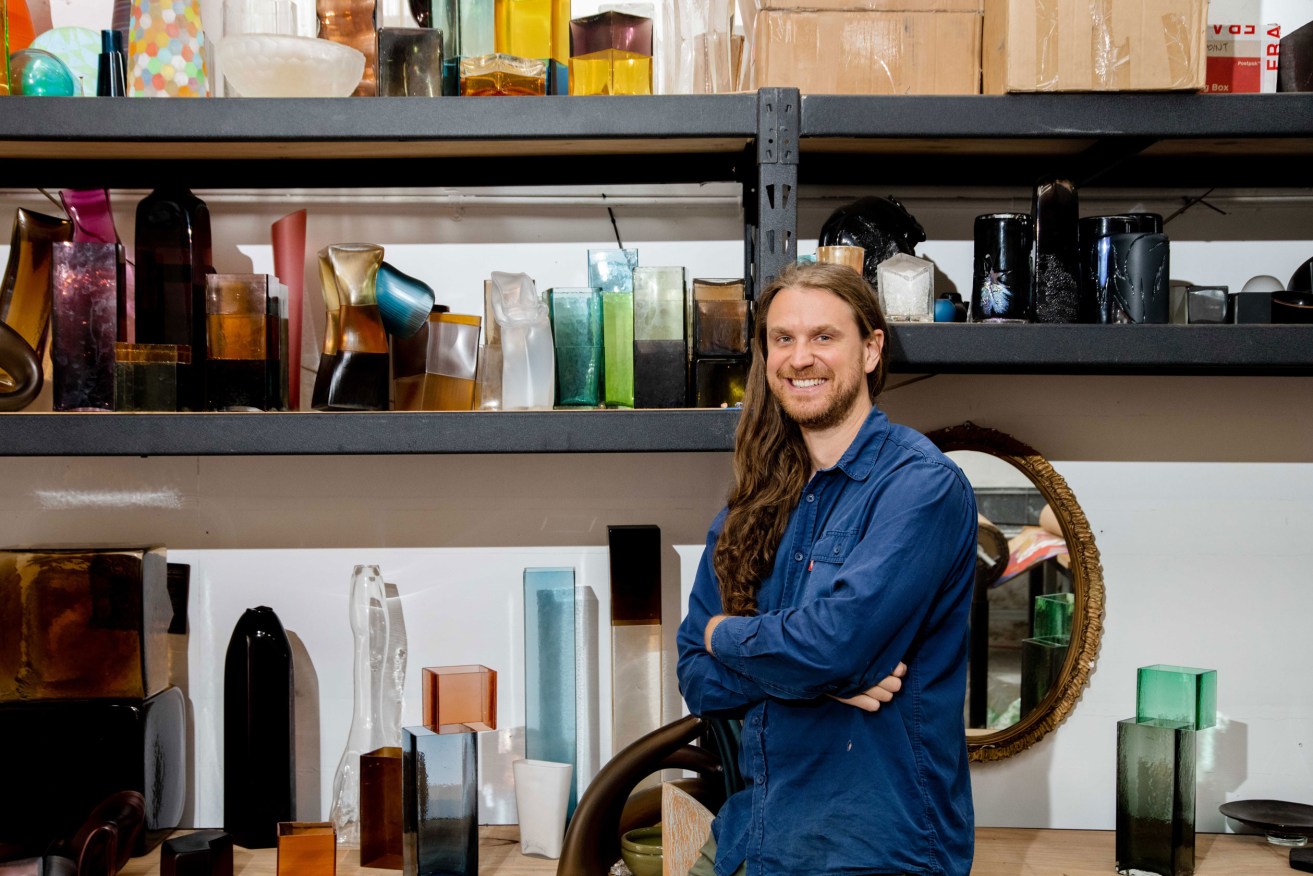
Liam Fleming with some of his work in the Queen’s Court studio he shares with two other glass artists. Photo: Jack Fenby
You could live your whole life in Adelaide without ever happening across Queen’s Court. Just a few metres back from the arterial traffic of Currie Street, it’s a little alleyway that forks into two dead ends, home to a mechanic’s garage, a handful of townhouses, and a few anonymous roller-doors.
Behind one of the roller doors, under a high-pitched corrugated-iron roof, is a studio filled with kilns and lathes and glassware in various stages of refinement. Set up more than two decades ago by renowned glassmaker Giles Bettison, the space is now home to a small clutch of local artists keeping the fire burning.
“I think as glass artists we do stick together,” says Liam Fleming, who has been a resident at Queen’s Court for nearly six years. “There’s three of us in the studio; Janice [Vitkovsky] has been here for 15 years, and Alex Valero and me.”
Camaraderie aside, Fleming explains that part of the reason for sharing the studio space is practicality: the equipment they use can be expensive and hard to come by, and much of the infrastructure is still in place from when Bettison set it all up.
“Most of these machines they don’t get in Australia – this one’s a Czech Republic lathe that just got shipped out,” he says, pointing to a yellow and green console with colourful buttons and dials.
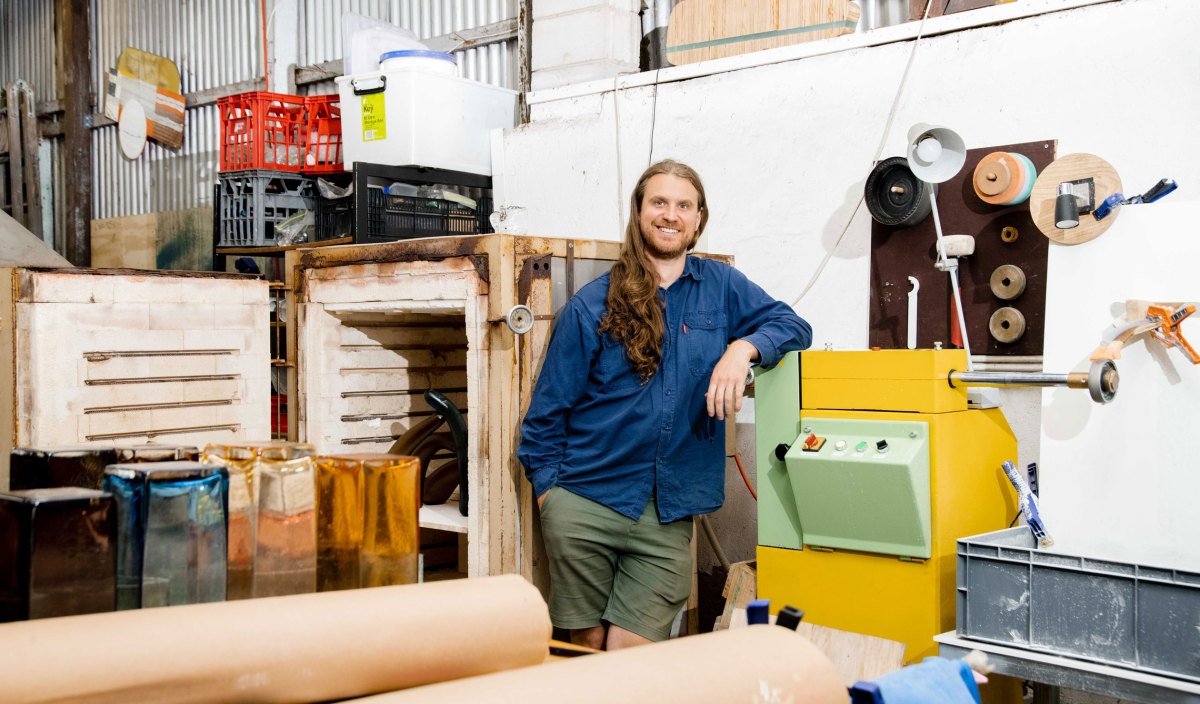
Fleming with the studio’s imported lathe. Photo: Jack Fenby
Another contraption, a kind of turntable made out of an old tyre, is Fleming’s own doing.
“This flatbed I had to build because you can’t really buy them. Machines like that are pretty integral to my work, as well as Janice’s and Alex’s. So you’ve kind of just got to do it yourself, which is fun, and costly – all those things.”
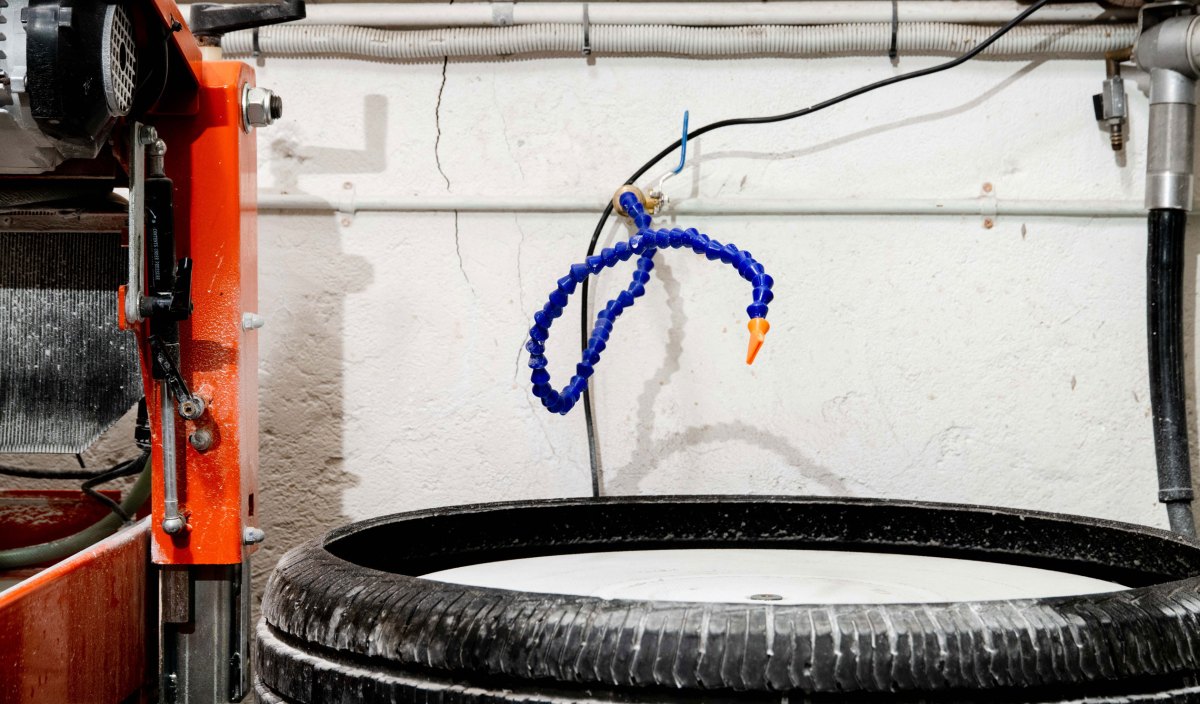
Machines are integral to the glass artist’s work. Photo: Jack Fenby
At the centre of the studio, with a chimney that runs up and out through the tin roof, is a furnace he calls the “glory hole”. For more heavy-duty glass blowing, Fleming and Valero visit JamFactory’s glass studio up the road – “that never gets turned off; they’re run 24/7” – but almost everything else can be done at Queen’s Court.
“A part of my studio is the welding set-up as well, at the back there,” he explains, pointing out some vaguely medieval-looking metal contraptions.
“I make these glass-blowing moulds and then I blow into the void here, and it takes the form. [It’s a] very simple and ugly way of making it, but it means I get this repetitive form, which I really love.”
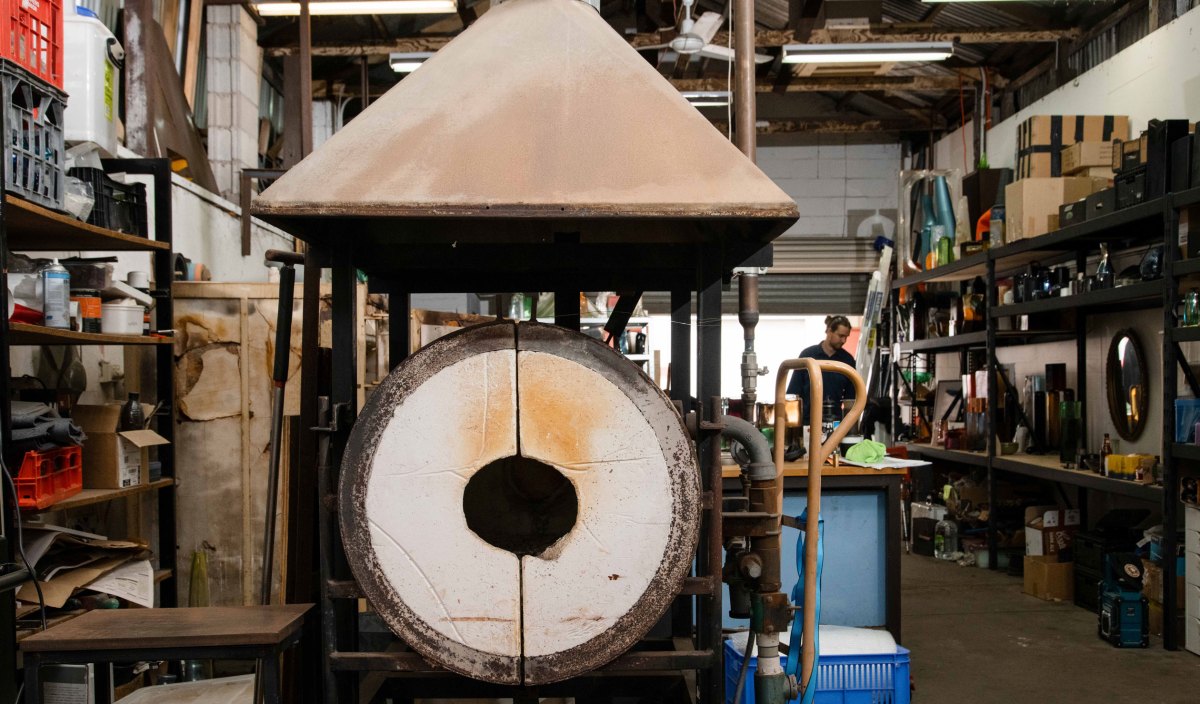
The ‘glory hole’ sits at the centre of the studio. Photo: Jack Fenby
Many of his pieces feature the recognisable, rectangular prism shapes set out by these metal moulds, but his more recent works muck with the symmetry and precision, as the perfect forms melt, slump and buckle in sometimes unpredictable ways.
“These vessels I’ve been heavily cold-working. I’m trying to capture that moment between a perfect form; it started out like this,” he says, pointing to a smooth, crisp shape, “and then I cold-work and using the lathe machine grind away colours. So I can create different depths and layers of colours, making more complicated forms… and then melt them in the kiln.”
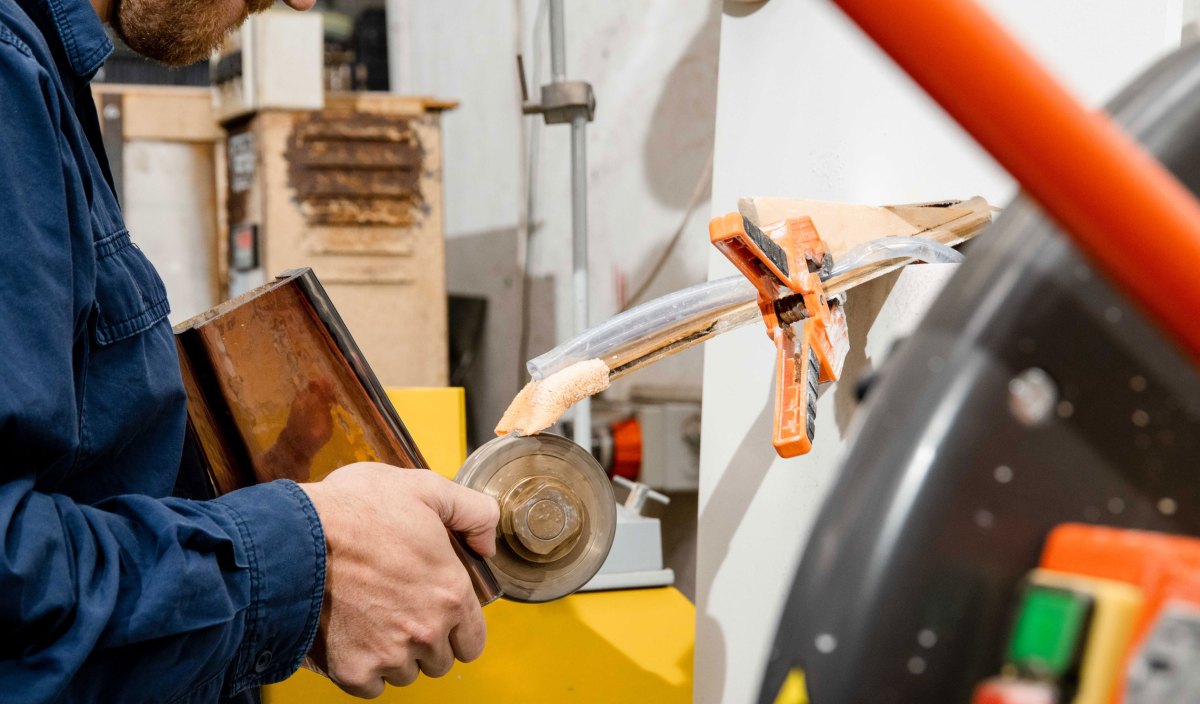
Fleming uses the lathe machine to grind away colours. Photo: Jack Fenby
Fleming used to spend even more time down the road, where he worked as production manager and design manager at JamFactory for seven years, until six months ago, when he stepped away to focus on his own work full time. It was a leap he’d been contemplating for a while, until a few big breaks in 2021 – he was a finalist in the Ramsay Art Prize, and then a recipient of a Guildhouse Fellowship – gave him the final push.
The Ramsay win was particularly formative, as it validated parts of Fleming’s work that he had previously regarded as playful experimentation.
“Eventually I just felt like it was the right time,” he says. “At the time it felt like a bit of a risk putting some studio experiments in [the Ramsay Prize]. It was what was happening in the studio here. It felt like progress, but nothing serious… until I started taking it seriously. Otherwise it was absolute play. And then I just thought, bugger it, let’s see what people think. And it was received really well, much to my surprise.
“Since that I’ve just stayed on that trajectory, that kind of work. The beauty of that work is that it asks so many questions and then it doesn’t answer any. It feels endless; I can blow a myriad of different shapes, and then take my time.”
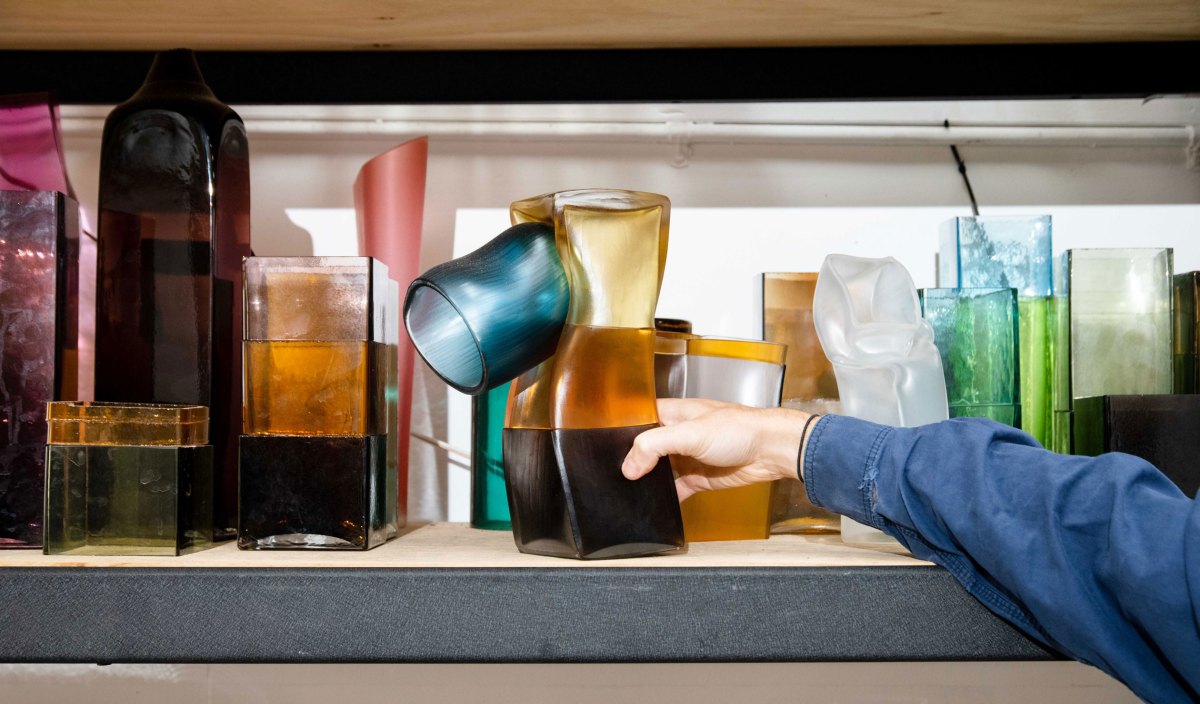
One of Liam Fleming’s recent, more complicated forms. Photo: Jack Fenby
Wherever he does end up will hopefully be a nice surprise – kind of like stumbling down Queen’s Court.
“I don’t feel like I’m following a pre-determined way of being a glassblower, which is nice,” Fleming reflects. “It feels more my own.”
Read more about Liam Fleming’s practice on his website.
In the Studio is a regular series presented by InReview in partnership with not-for-profit organisation Guildhouse. The series shares interesting stories about South Australian visual artists, craftspeople and designers, offering insight into their artistic practices and a behind-the-scenes look at their studios or work spaces. Read our previous stories here.




